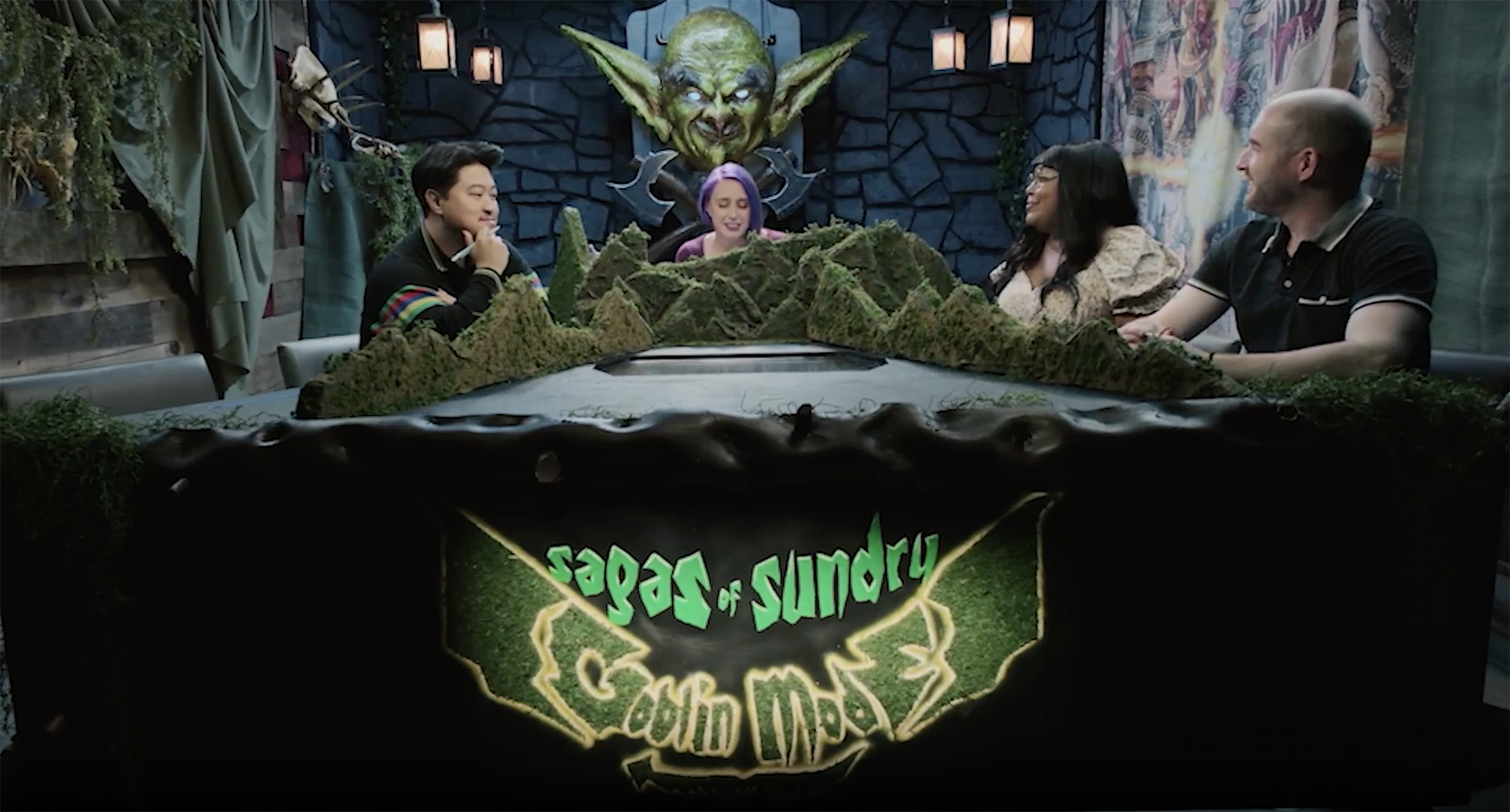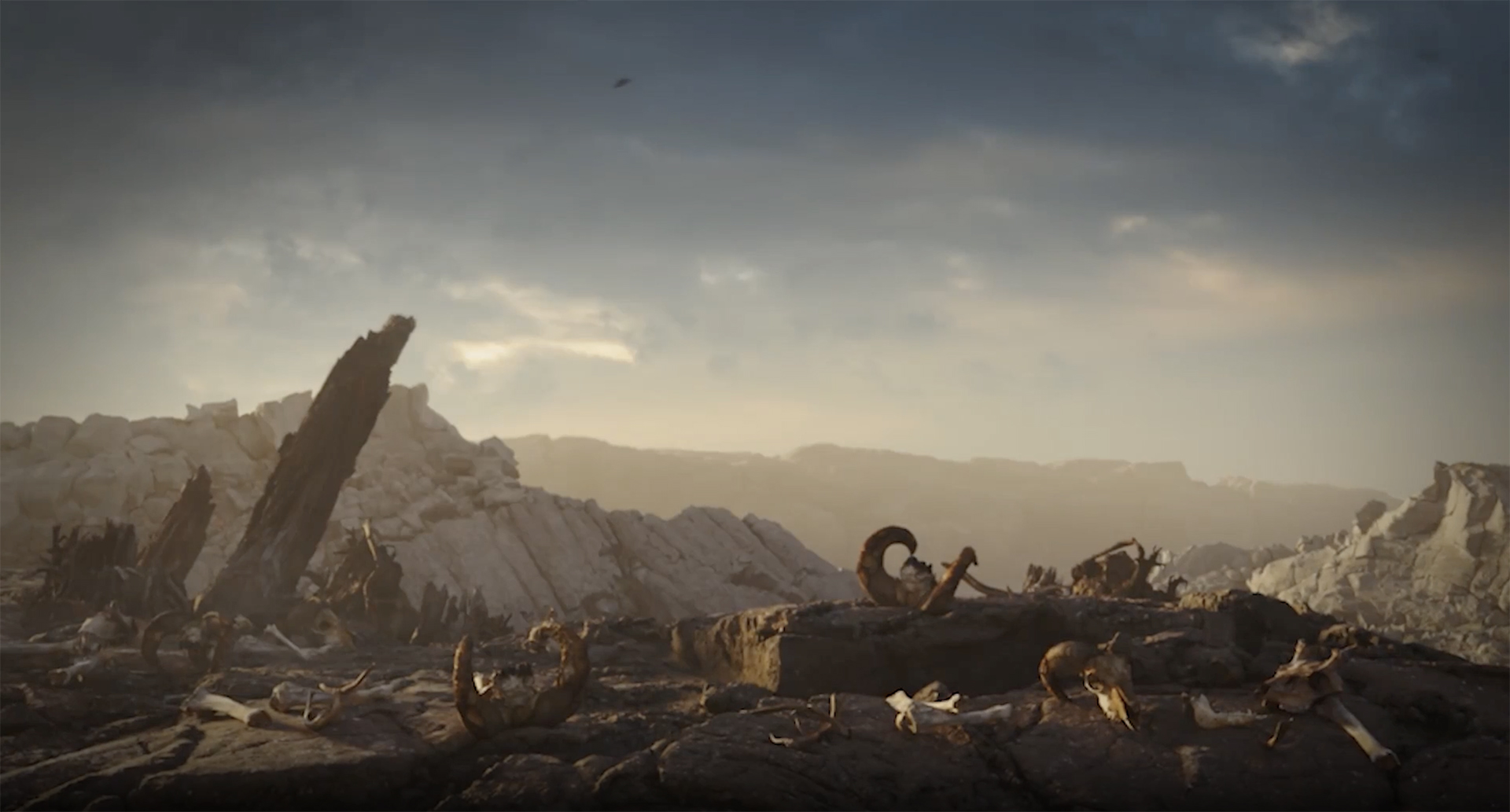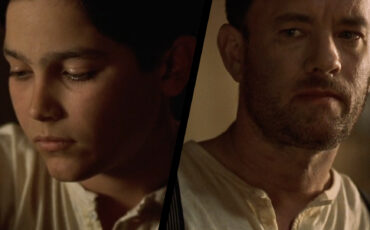Gamemaster Amy Vorpahl Shares Goblin Mode Writing Secrets
Writing is a peculiar thing. As with every creative process, it can take so many forms and grow in so many directions! For instance, have you ever tried to develop a story for a 20-episode tabletop RPG show, where players influence the plot, and the storyline needs constant adjustment? Seasoned gamemaster Amy Vorpahl has. In our talk, she reflects on the world-building and writing process of her latest series, “Sagas of Sundry: Goblin Mode,” and gives plenty of useful tips for creative heads out there.
Imagine a vast Google document with 120 pages, spanning the basic outline of each and every episode. Then, on a separate doc add world-building elements, ideas for cinematic moments, and lore (the story that gives your world meaning). These are the results of Amy’s prep for “Sagas of Sundry: Goblin Mode.” Was this approach helpful? Oh yes! Did she always follow it during the filming? Absolutely not! So how does one approach such a different and complex kind of writing? We talk about all this and more in the video interview above. Below, you will find a few of the highlights.
By the way, if you have no idea what D&D is and have never heard of the tabletop role-playing game, “Goblin Mode,” head over here to read/watch our first interview about this show with the director Graham Ehlers Sheldon. There, we explain all the terms and peek behind the scenes of the entire process, from technical solutions to creative challenges.
About Amy and her role in Goblin Mode
Amy Vorpahl is an actor, writer, professional dungeon master (alternative names: a DM or a gamemaster), and adventure author with several published books. A lot of her work has been – as she calls it – on the nerdy Internet, performing in and mastering the D&D or tabletop RPG games.
Writing 101
In “Goblin Mode,” Amy takes on the role of the dungeon master throughout the campaign. This entails various responsibilities: the head writer, a showrunner, a co-director on set, and a game designer. Most importantly, it means guiding the story along, improvising in action, and performing all the non-player characters, good or bad, monsters or quest givers.
The world and how it comes together
The original world of “Goblin Mode” – Sundaros – is a world “once ruled by godlike beings and now plunged into chaos following their disappearance.” In Amy’s words, the story takes place on the evil side of things and follows the former minions of an overlord who have disappeared and who have now got to find out who they are past the dungeon and what their own purpose in life is.

As Amy explains in our interview, D&D and tabletop RPGs are what one could call “collective storytelling.” Everyone sits around the table. The gamemaster sets the stage and describes the scene to the players on exactly what they are seeing. The players, in turn, can interact with everything however they like and make decisions about what to do next. Instead of video game controllers, they have their character sheets, where they mark statistics – like health or skills – with a simple pencil. The rest is, as Amy calls it, “the theatre of the mind.” At least, in “Sagas of Sundry: Goblin Mode.”
Writing Goblin Mode: the approach
Sounds exciting, doesn’t it? But also complicated. If players influence the story so much, how can you write a cohesive script for the show? Amy’s prep was based on the following creative blocks:
- Most of the locations and geography were set up in advance.
- Amy thought about different cinematic moments that could happen in these locations.
- Her Google doc also featured the story bits that she thought were going to appear, non-player characters and monsters they would encounter, as well as any motivations for the main characters, and small world details that could add flavor to her storytelling.
- She also broke 20 episodes into five sections with four episodes each and developed mini story arcs within those blocks – a possible beginning and ending for these story bits, as well as the geographic changes.
That said, nothing was ever set in stone. Amy recalls that in writing “Goblin Mode,” she planned in detail episodes 1-4. Halfway through filming, she asked the players where they wanted to head next. Suddenly, they named a place that she barely mentioned and had initially planned for episode 16. Well, with an open world and collective writing in action – anything can happen!
Collective storytelling and improvisation in the writing of Goblin Mode
Amy’s rule of thumb: you prep as much as you can and then throw out 60-70%.
I don’t recommend that the dungeon master doesn’t prepare anything at all. You just have to really lean into uncertainty. It feels nice and cozy to be prepared, but then – it is up to the players as to what they actually do.
Even though “Goblin Mode” is a show (not just a game with friends) – anything can happen, and the crew learned to pivot. Changing the written storylines between the episodes was one thing. Assets for specific locations were another example. Amy would tell the crew and the director Graham where she thought the players would go, and they developed the art for those places. Some of this art wasn’t used at all because they never entered those places.

With all this uncertainty, improvisation becomes the number one skill, in Amy’s opinion. As a gamemaster, you are constantly making up stuff on the spot: the story, the locations, the game mechanics, different reasons to roll the dice… The improv classes are of great help if you want to acquire this skill. The good news is that you can become a DM even without them. Amy explains that it all comes down to imagining something in your head quickly and describing it in detail to players. After all, we humans are naturally great storytellers. We have it in our bones.
Some other insights from Amy
This was just a sneak peek into our exciting discussion with Amy Vorpahl. Check out the video above to learn about:
- What is session zero, and how was it helpful for the campaign?
- How does Amy help players build characters in advance and then weave their stories into the plot?
- Is it possible to maintain the red thread throughout 20 episodes with a classic hero journey structure? How did the players manage to hit the midpoint collectively without being pushed towards it?
- Working with flashbacks to develop the story forward during the game;
- And all the other tips and insights from Amy on writing “Goblin Mode” and becoming a brilliant gamemaster.
Also, you can go to the “Geek and Sundry’s” YouTube channel and check out the “Sagas of Sundry: Goblin Mode” episodes that have already launched.
What do you think about such a complex writing task? And how do you feel about collective writing? Would you like to try it out? Share your thoughts with us in the comments below!
Feature image source: Geek & Sundry.




























